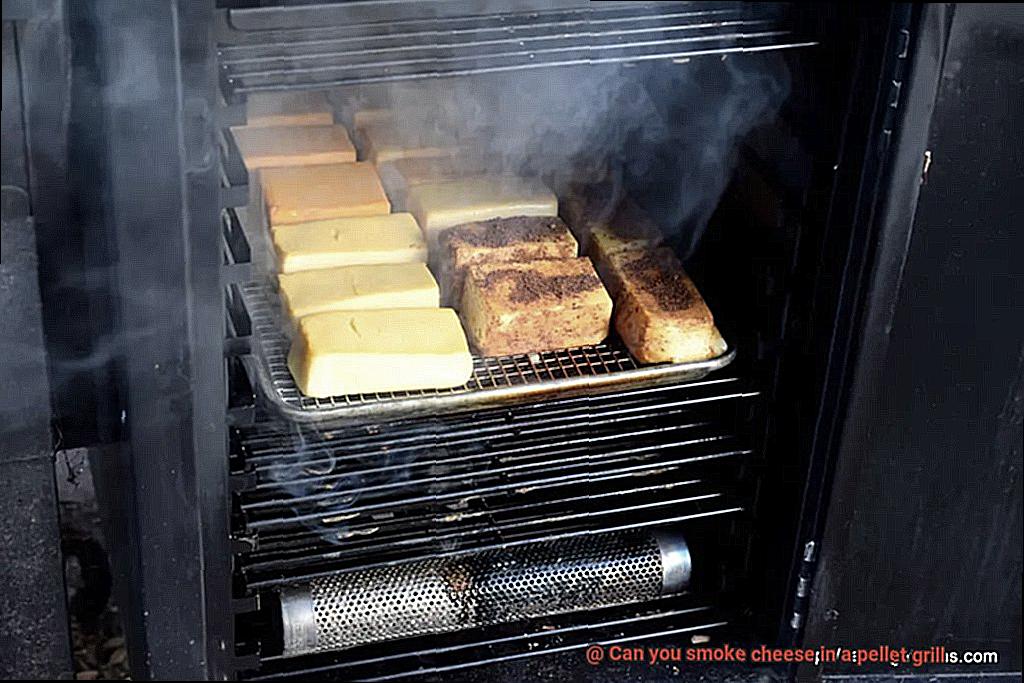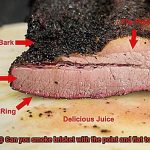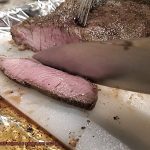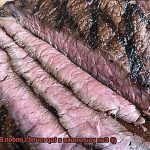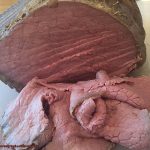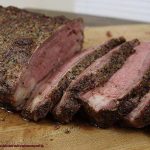Calling all cheese enthusiasts. If you love the smoky flavor of barbecue, then smoking cheese is a must-try. But can you smoke cheese in a pellet grill? The answer is an emphatic yes.
Pellet grills have revolutionized the world of barbecue with their versatility and ease of use. They are a go-to choice for many barbecue aficionados because they offer the perfect temperature control to smoke cheese without melting it. With that said, smoking cheese in a pellet grill can be tricky. Cheese can easily lose its shape and texture if not done correctly.
So, how do you avoid this? It’s all about technique and expertise. In this blog post, we will explore the do’s and don’ts of smoking cheese in a pellet grill, share tips for temperature control, and reveal ways to achieve the perfect cheesy flavor.
Join us on this savory journey as we dive into the world of smoking cheese in a pellet grill. Grab your favorite crackers and beverage, sit back, relax, and let’s get started.
Contents
Benefits of Smoking Cheese in a Pellet Grill
Unlike other smoking methods that can overpower the cheese, the slow and low-heat cooking process of smoking allows the cheese to absorb the smoky flavor without losing its texture. Here are some benefits to smoking cheese in a pellet grill:
- Easy and Convenient: Smoking cheese in a pellet grill requires minimal effort. Set your pellet grill to a low temperature, add some wood pellets, and place your cheese on the grill grates. The rest is simply waiting for the smoke to work its magic. This convenience makes smoking cheese in a pellet grill an ideal option for novice smokers who are just starting to experiment with smoking.
- Cost-Effective: Pellet grills are known for their fuel efficiency, and using wood pellets is much cheaper than other forms of smoking such as charcoal or propane. This means you can smoke your cheese without breaking the bank.
- Personalization of Flavors: With numerous types of wood pellets available on the market, each with its own unique flavor profile, you can experiment with different types of wood pellets to create unique flavor combinations that suit your taste preferences. From the sweet and fruity taste of applewood to the bold and smoky flavor of hickory, there’s a wood pellet out there for you.
- Impress Your Guests: Smoking cheese in a pellet grill adds depth and complexity to your cheese, making it an impressive addition to any charcuterie board or dish. Plus, the process of smoking cheese in a pellet grill is sure to impress your guests and make them think you’re an experienced pitmaster.
To get started, keep in mind that smoking cheese requires a low and consistent temperature. Use hard cheeses such as cheddar, gouda, or parmesan that have a lower moisture content and can withstand the smoking process without melting or becoming too soft.
Let the cheese sit at room temperature for about an hour before smoking to allow it to dry out slightly. Use flavored wood pellets such as applewood or hickory to add flavor to the cheese and smoke it for 1-3 hours depending on how strong you want the smoke flavor to be.
Finally, let the cheese sit in the refrigerator for at least 24 hours before consuming to allow the smoke flavor to fully develop.
Necessary Equipment for Smoking Cheese in a Pellet Grill
Before you start, it’s important to have the right equipment. As an expert in smoking cheese in a pellet grill, let me guide you through the necessary equipment required.
Firstly, a pellet grill is a must-have. It uses wood pellets to create both heat and smoke, making it perfect for smoking cheese. But that’s not all you’ll need. You’ll also require a cold smoking kit to keep the temperature low, preventing the cheese from melting.
Next up: the cheese rack. This essential item holds the cheese while it’s being smoked, ensuring that it gets evenly smoked throughout. And don’t forget about the wood pellets – the type you choose will affect the flavor of your cheese. Mesquite, hickory, and applewood are popular choices for smoking cheese.
Monitoring the temperature is crucial, so make sure to have a thermometer on hand at all times. And if you want to prevent your cheese from drying out or getting too much smoke, use foil to cover it during the smoking process.
Temperature Control for Smoking Cheese in a Pellet Grill
Before you start, let’s talk temperature control, the key to achieving the perfect result in your pellet grill.
Unlike other meats, cheese is a sensitive food that requires careful temperature control. If exposed to high temperatures, it can quickly melt or become oily, ruining the texture and taste of your cheese. Therefore, maintaining a low temperature range between 60-80°F (15-27°C) is crucial when smoking cheese in a pellet grill. But how do you achieve that?
Firstly, you can set your pellet grill to its lowest setting, but if that’s not possible, consider using an external temperature controller. These controllers are designed specifically for pellet grills, allowing you to set and maintain the desired temperature range throughout the smoking process.
Another option is to use a cold smoke generator. This device generates smoke without producing heat, ensuring that the cheese stays at a low temperature throughout the smoking process. With this method, you can achieve that perfect smoky flavor without any risk of melting your cheese.
However, don’t forget about external factors like weather conditions that can affect the temperature of your pellet grill. For example, on a hot summer day, the temperature inside the grill may be higher than the set temperature due to sunlight and humidity. To avoid this issue, consider moving your pellet grill to a shaded area or using a tent or cover to shield it from direct sunlight.
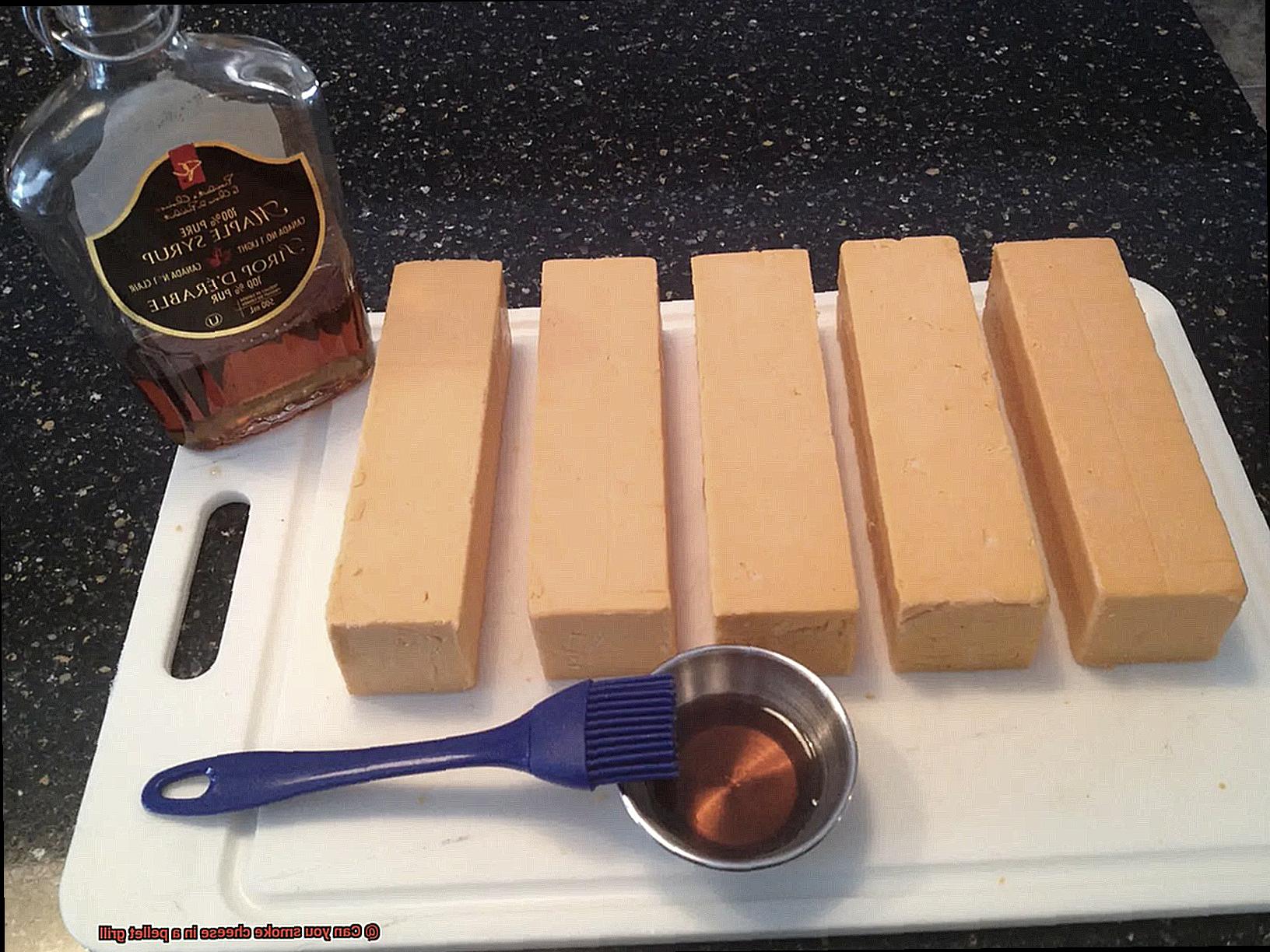
In summary, maintaining the right temperature range is crucial when smoking cheese in a pellet grill. To achieve this, use an external temperature controller, set your pellet grill to its lowest setting or use a cold smoke generator. Be mindful of external factors like weather conditions and ensure that you’re monitoring the temperature of your pellet grill throughout the entire process.
Choosing the Right Type of Cheese for Smoking
Smoking cheese in a pellet grill can be a game-changer, but choosing the right type of cheese is crucial to achieving the best results.
Not all types of cheese are created equal when it comes to smoking. So, let’s dive into the different types of cheese suitable for smoking in a pellet grill.
First up, hard cheeses like cheddar, gouda, and parmesan are perfect for smoking. These cheeses can withstand the heat and smoke without melting too much. Plus, their higher fat content helps them to absorb and hold onto the smoky flavor.
If you’re feeling daring, semi-soft cheeses like provolone, havarti, and fontina can also be smoked. However, these types of cheese require more attention and care during the smoking process because they have a lower fat content and can quickly melt if exposed to too much heat.
But here’s the caveat: soft cheeses like brie and camembert are a big no-no when it comes to smoking. These cheeses have a high moisture content and can become mushy and unpleasant when exposed to smoke.
Now that you know the different types of cheese suitable for smoking in a pellet grill let’s talk about the importance of using high-quality cheese. Using high-quality cheese with good flavor and texture will result in better-tasting smoked cheese.
But wait, there’s more. Here are some additional tips to make your smoked cheese experience even better:
- For an even smokier flavor, try using different types of wood pellets such as hickory or applewood.
- Allow your cheese to sit for at least an hour after smoking to allow the flavors to meld together.
- Store your smoked cheese in an airtight container in the refrigerator for up to two weeks.
Preparing the Cheese Before Smoking
The process of smoking cheese is an excellent way to add an extra layer of flavor to your favorite cheeses. However, before you start grilling, it’s crucial to prepare the cheese correctly. In this article, we’ll guide you through the essential steps for preparing the cheese before smoking.
Firstly, selecting the right cheese is crucial. Soft cheeses like brie and camembert are not ideal for smoking. Instead, opt for hard or semi-hard cheeses like cheddar, gouda, and provolone. These types of cheese can withstand the heat of the grill and won’t melt away.
Once you’ve chosen your cheese, cut it into small chunks or blocks to ensure even smoking. Before placing it on the grill, let it sit at room temperature for about an hour. This will prevent the cheese from sweating too much during the smoking process.
Now comes the exciting part – adding a dry rub or coating to enhance the flavor. A dry rub made from a mixture of salt, pepper, garlic powder, and paprika is a popular choice. It acts as a protective layer and prevents the cheese from melting away while also adding a delicious flavor.
It’s essential to monitor the temperature of your grill carefully. The ideal temperature for smoking cheese is between 70-80°F. Any higher than this and your cheese may become too soft or even melt. To achieve this temperature, use wood pellets that have a low smoke point and place them in a cold smoker attachment.
Adding Flavor to the Smoked Cheese
Get ready to tantalize your taste buds with the ultimate smoked cheese experience. Adding flavor to smoked cheese is a perfect way to elevate its taste and aroma, and as an expert in this field, I am here to guide you through the process.
When smoking your cheese in a pellet grill, you can add a variety of ingredients to infuse different flavors into the cheese. One popular option is using wood chips. Different types of wood chips produce different flavors, so it’s important to choose the perfect match for your cheese. For instance, hickory wood chips will give your cheese a smoky and slightly sweet flavor that pairs well with cheddar or gouda cheese. On the other hand, applewood chips will add a fruity and sweet taste that complements softer cheeses like brie or camembert.
Another way to add flavor to your smoked cheese is by using herbs and spices. You can mix rosemary, thyme, or oregano with olive oil and brush it onto the surface of the cheese before smoking it, creating a delicious herbal aroma that infuses into the cheese. Alternatively, you can sprinkle paprika, cumin, garlic powder, or black pepper onto the cheese before smoking it for an explosion of flavor.
To take it up a notch, try using liquids such as wine or beer to add an extra layer of complexity to your smoked cheese. Mix wine or beer with herbs or spices and brush it onto the surface of the cheese before smoking it for a unique flavor that complements your favorite beverage perfectly.
How Long to Smoke the Cheese For?
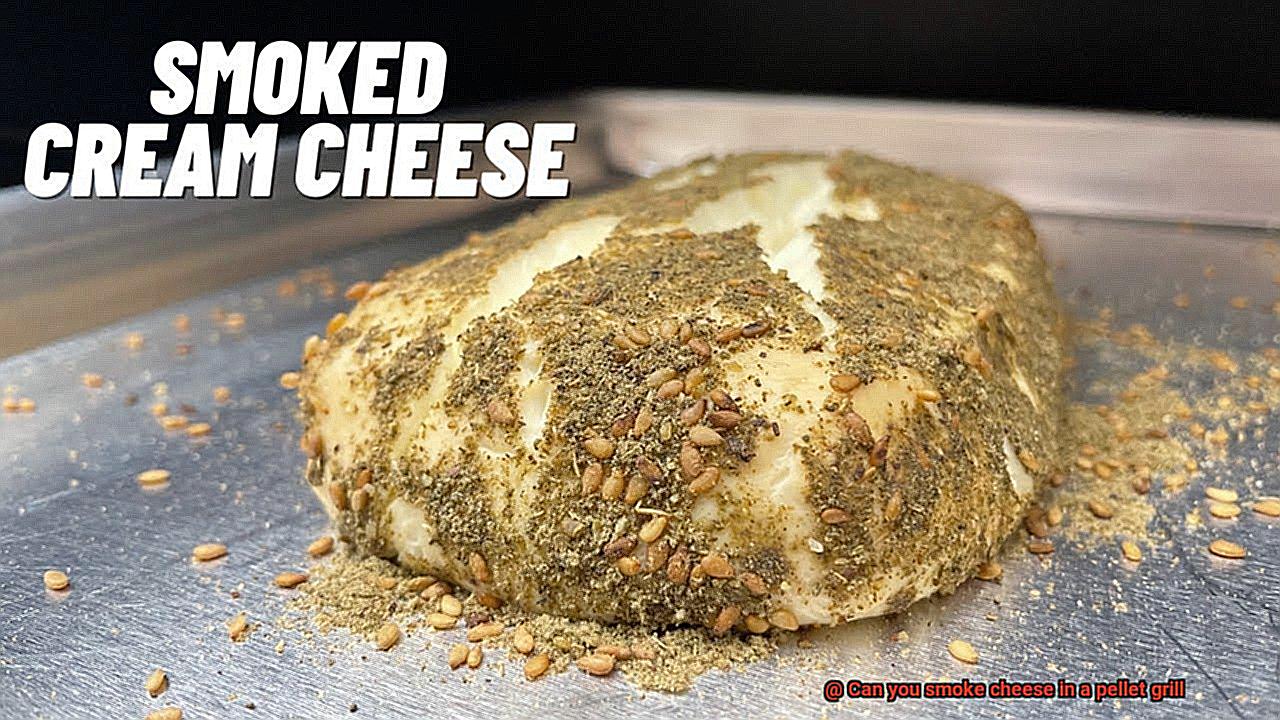
Before we dive into the details, let’s remind ourselves that timing is everything when it comes to smoking cheese.
The length of time you smoke the cheese for will determine its flavor profile and texture. Generally, the longer you smoke the cheese, the stronger the smoky flavor will be. But if you smoke it for too long, the cheese may become overly dry or even crumbly. So, most experts recommend smoking cheese for no more than 2-3 hours. This allows enough time for the smoke to penetrate the cheese without drying it out.
It’s also important to use a lower temperature when smoking cheese, around 80-90 degrees Fahrenheit. This will prevent the cheese from melting or becoming too soft. And different types of cheese will require different smoking times. Harder cheeses like cheddar or gouda can handle longer smoking times, while softer cheeses like brie or camembert may only need to be smoked for an hour or less.
Now, let’s talk about adding even more flavor and aroma to your smoked cheese. Experiment with different wood chips, herbs and spices, wine and beer – the possibilities are endless. You can try hickory or applewood chips for a classic smoky flavor, or mix it up with rosemary or thyme for an herbal twist. And if you want to get fancy, soak your wood chips in red wine or beer for an extra layer of complexity.
But remember, the best way to determine how long to smoke your cheese is through trial and error. Start with shorter smoking times and gradually increase until you find your desired level of smokiness. Keep a close eye on the cheese during the smoking process to avoid over-smoking or melting.
Refrigeration After Smoking the Cheese
Now, to make sure that the taste and quality of the cheese remains intact, it is essential to store it correctly. As a professional in this field, I can guarantee that proper refrigeration is the key.
To ensure that the smoked cheese remains fresh and safe for consumption, it should be stored at a temperature between 34°F and 38°F. This temperature range prevents the growth of harmful bacteria that could lead to foodborne illnesses.
However, before you refrigerate the cheese, let it rest for at least 24 hours after smoking. This resting period allows the flavors to develop and settle into the cheese, making it more delicious than ever.
Once the cheese has cooled down, wrap it tightly in plastic wrap or wax paper and store it in an airtight container in the refrigerator. Remember that different types of cheeses have different shelf lives. Hard cheeses like cheddar and gouda can last up to six months in the refrigerator, while soft cheeses like brie and camembert have a shorter shelf life of only a few weeks. It’s always best to check the expiration date on the cheese packaging or consult with a cheesemonger for guidance on how long a specific type of cheese will last.
In addition, when storing smoked cheese, keep it separate from other foods with strong odors. Cheese is susceptible to absorbing flavors and smells from other foods, so storing it in its own separate container or wrapping it tightly minimizes this risk of flavor contamination.
MiZrGlh1mTg” >
Conclusion
In conclusion, smoking cheese in a pellet grill is not only possible but also an excellent way to enhance the flavor of your favorite cheeses. The temperature control provided by pellet grills makes it easy to smoke cheese without melting it. However, smoking cheese in a pellet grill requires expertise and technique to avoid losing its shape and texture.
To achieve the perfect smoky flavor, it is crucial to choose the right type of cheese, use high-quality cheese, monitor the temperature closely, and add flavor. Hard cheeses like cheddar, gouda, or parmesan are ideal for smoking as they have a lower moisture content and can withstand the smoking process without melting or becoming too soft.
Smoking cheese in a pellet grill is easy and cost-effective, allowing you to personalize flavors according to your taste preferences. Impress your guests with the depth and complexity of smoky flavors that will leave them craving for more.
To store smoked cheese correctly after refrigeration, wrap it tightly in plastic wrap or wax paper and store it in an airtight container at a temperature between 34°F and 38°F. With these tips on hand, you’re now ready to embark on your savory journey into the world of smoking cheese in a pellet grill.

